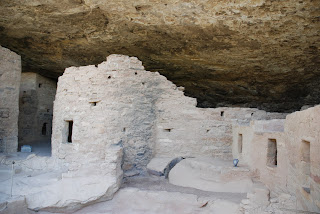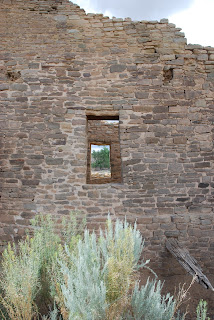9:30 starting today to see the two previously inhabited by Indians.Highway 491 east, turn first 191 highway to 76 miles outside of Mesa Verde National Park (Mesa Verde National Park), to reach the time is 11:15, and the hot weather.
At Mesa Verde, Spanish for "green table," multistoried dwellings fill the cliff-rock alcoves that rise 2,000 feet above Montezuma Valley. Remarkably preserved, the cliff dwellings cluster in canyons that slice the mesa into narrow tablelands. Here, and on the mesa top, archaeologists have located more than 4,800 archaeological sites (including 600 cliff dwellings) dating from about A.D. 550 to 1300.
The sites, from mesa-top pithouses and multistoried dwellings to cliffside villages, document the changes in the lives of a prehistoric people once dubbed the Anasazi. They are now more accurately called the ancestral Puebloans, and modern Pueblo tribes in the Southwest consider themselves descendants of these ancestral people. Some 40 pueblos and cliff dwellings are visible from park roads and overlooks; some of these are open to the public.
Beginning about A.D. 750, the ancestral Puebloans grouped their mesa-top dwellings in pueblos, or villages. About 1200 they moved into recesses in the cliffs. So sheltered, these later villages seem to stand outside of time, aloof to the present.
In 1888 two cowboys tracking stray cattle in a snowstorm stopped on the edge of a steep-walled canyon. Through the flakes they made out traces of walls and towers of a large cliff dwelling across the canyon. Novelist Willa Cather later described the scene: "The falling snowflakes sprinkling the piñons, gave it a special kind of solemnity. It was more like sculpture than anything else … preserved … like a fly in amber."
Climbing down a makeshift ladder, the excited cowboys explored the honeycombed network of rooms that they named Cliff Palace. Inside, they found stone tools, pottery, and other artifacts in rooms that had been uninhabited for some 600 years.
Why the Mesa Verde people eventually left their homes may never be known. Indeed, they lived in the cliff dwellings for only about the last 75 to 100 years of their occupation of Mesa Verde. Early archaeologists guessed warfare, and the evidence for this seems to concur. Archaeologists also think they may have been victims of their own success. Their productive dry farming allowed the Mesa Verde population to grow perhaps as high as 5,000. Gradually woodlands were cut, wild game hunted out, and soils depleted. Years of drought and poor crops may have been aggravated by village squabbles. By the end of the 13th century the ancestral Puebloans had left the plateau, never to return.
16:00 arrive in New Mexico; looks very soil…
16:30 we came to the Aztec Ruins National Monument (Aztec Ruins National Monument), located 14 miles northeast of Farmington, relatively remote location, few visitors
The Aztec Ruins National Monument preserves ancestral Pueblo structures in north-western New Mexico, located close to the town of Aztec and northeast of Farmington, near the Animas River. Salmon Ruins and Heritage Park, with more ancestral Pueblo structures, lies a short distance to the south, just west of Bloomfield near the San Juan River. The buildings date back to the 11th to 13th centuries, and the misnomer attributing them to the Aztec civilization can be traced back to early American settlers in the mid-19th century. The actual construction was by the ancestral Puebloans, the Anasazi.
17:15 we left the Aztec Ruins National Monument began to rain, stay in Farmington, NM


























